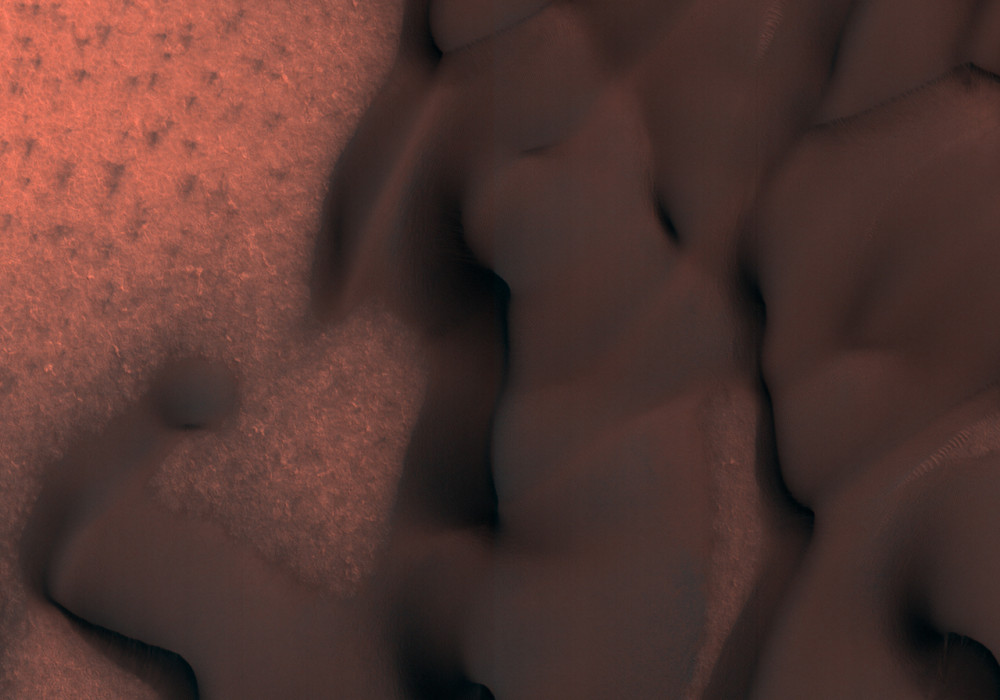This north polar dune field is bounded by a small unnamed crater about 11 kilometers in diameter in the Vastitas Borealis region. This crater captured deposits of basaltic sand that may have been transported from the North Polar Erg, a massive sea of sand that surrounds the Martian northern pole.
This region experiences a variety of winds that blow from various directions during different seasons and times of day, and the winds are also affected by the topography of the crater itself. This influences the movement of sand within the crater and the dunes that they shape.
This image shows many transitioning dunes which indicate changes of wind direction. The wind direction can be inferred from the location of the steeper side of the dune (called the slip-face) which is downwind of the dominant wind direction. The barchans and barchanoid dunes form crescent shapes and are consistent with dominant winds from the southwest.
Towards the center of the dune field, the barchans transition from crescent shapes into irregular, more elongated dunes and merge. The more northern part of the dune field consists of longitudinal dunes which extend from the horns of modified barchans in the central part of the dune field. These longitudinal dunes form along the trend of southerly-southeasterly winds.
Because it is early summer, solar radiation has heated the sand and there are only a few small patches of frost remaining on the dunes at this season. However, evidence of the arctic climate is visible in the polygons surrounding the dune field. The polygons, like those found at the Phoenix Mission landing site, are produced by freeze-thaw cycles as the polar soil expands and contracts.
Written by: Circe Verba/P Geissler (4 September 2008)
More info and image formats at http://hirise.lpl.arizona.edu/PSP_009087_2550
Image: NASA/JPL/University of Arizona
